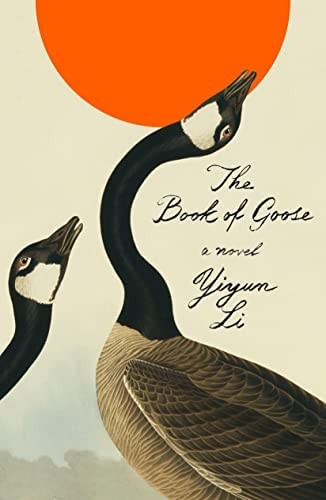Trevor Burrows started reading Book of Goose by Yiyun Li

Book of Goose by Yiyun Li
Fabienne is dead. Her childhood best friend, Agnès, receives the news in America, far from the French countryside where the …

Fabienne is dead. Her childhood best friend, Agnès, receives the news in America, far from the French countryside where the …
Yiyun Li's *The Book of Goose* is quite wonderful so far! The relationship between the two main characters is just mysterious enough, unsettling enough, to keep you unsure of where things are headed. The narrator (Agnes) speaks in aphoristic language that doubles that sense of mystery and uncertainty.
Many of Agnes's most interesting passages have to do with the identity of things and the relationship between one thing and another --- it's fuzzy, but I would characterize them as concerned with issues of translation and commensurability. Hinting at the limits of language, but not only language.
We get this in the very first passage:
"You cannot cut an apple with an apple. You cannot cut an orange with an orange. You can, if you have a knife, cut an apple or an orange. Or slice open the underbelly of a fish. Or, if your hands are steady enough and the blade is sharp enough, sever an umbilical cord." (3)
2/n
Here, Agnes considers this bundle of themes more directly:
"Fourteen years have passed since then. Soon I will be many decades removed from Fabienne. But years and decades are mere words, made-up names for units of measurement. One pound of potato, two cups of flour, three oranges, but what is the measuring unit for hunger?" (18)
What is the measuring unit for hunger --- fantastic!
3/n
Another koan-esque observation moves from a matter-of-fact acceptance of mortality to :
"The journalists and critics, mindless people, refused to see that the distance between life and death was always shorter than people are willing to understand. One step further, one breath skipped -- it does not take much to slip from life into death.
From life to life? That is a long way. The cousins of my geese, the wild ones, fly over a continent. People leave their homes for new homes, new cities, new countries. But who can shorten the distance between two people so they can say with confidence that they have reached each other?" (53)
4/n
But there are also lots of singular observations that are easy to miss if you're reading too fast.
Agnes on childhood and adulthood:
"I have not met a child who is not lopsided in some way. And when children grow up, they become lopsided adults." (11)
Finished this a few days ago:
Not a lot to say at the moment. Although I enjoyed it quite a bit, it really felt like the second half or so lost much of the momentum and intrigue that was built up in the first half?
Which in terms of the story itself, actually makes sense. Much of the novel pivots on the complicated friendship (?) of two young girls. That relationship, far from a simple friendship, injects the book with a great deal of uncertainty and curiosity early on. It also inspires the sort of koan-esque aphorisms that Agnes shares.
But as the novel proceeds and distance comes between the two girls - geographic, but also figurative - so it makes sense that the tone shifts, as does the tension.